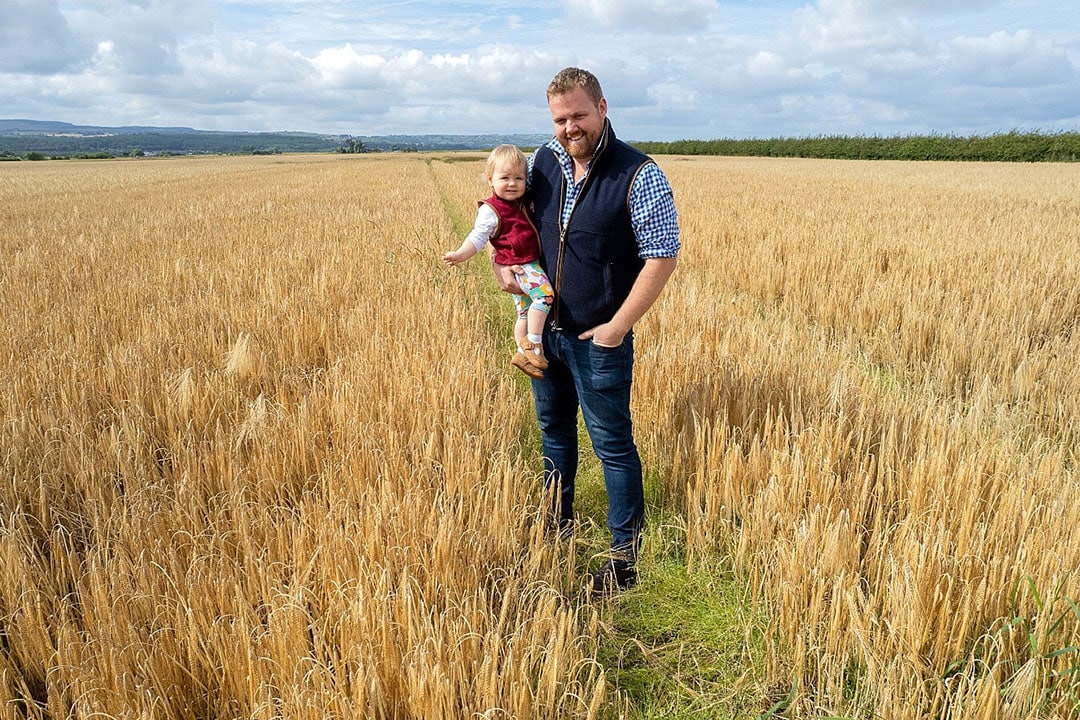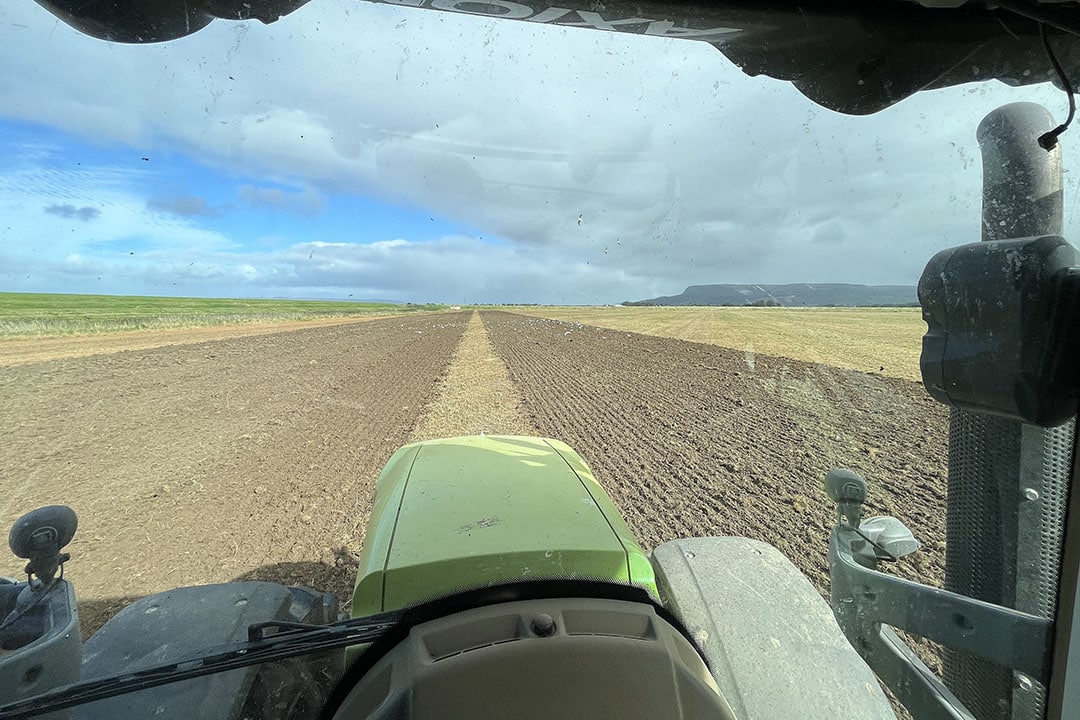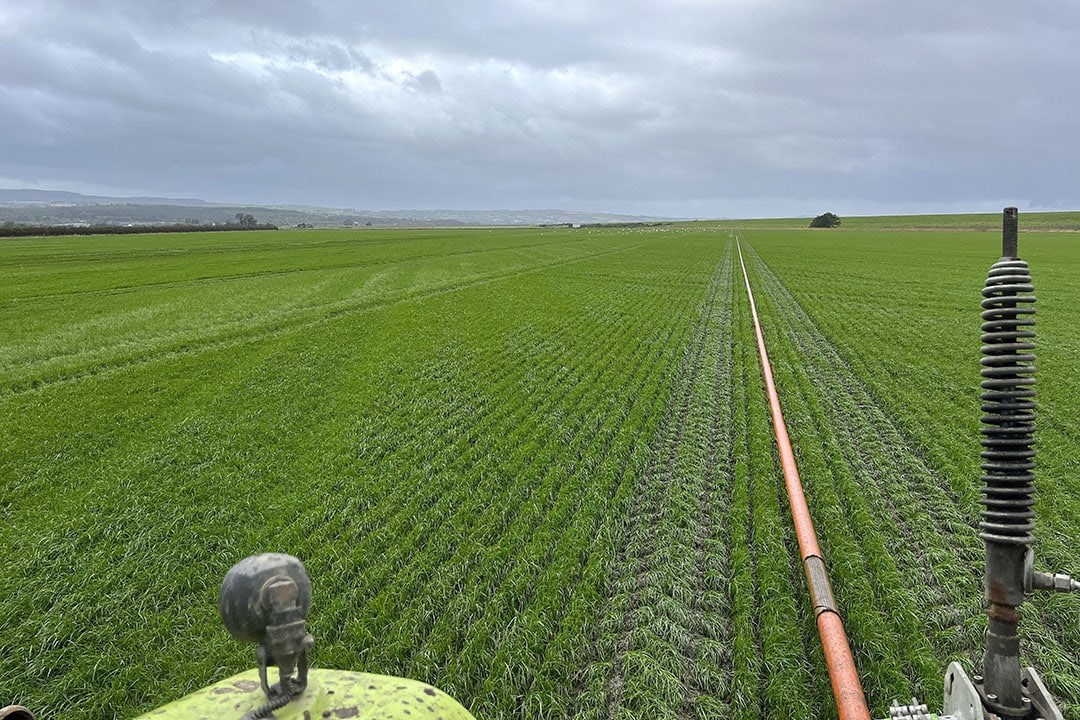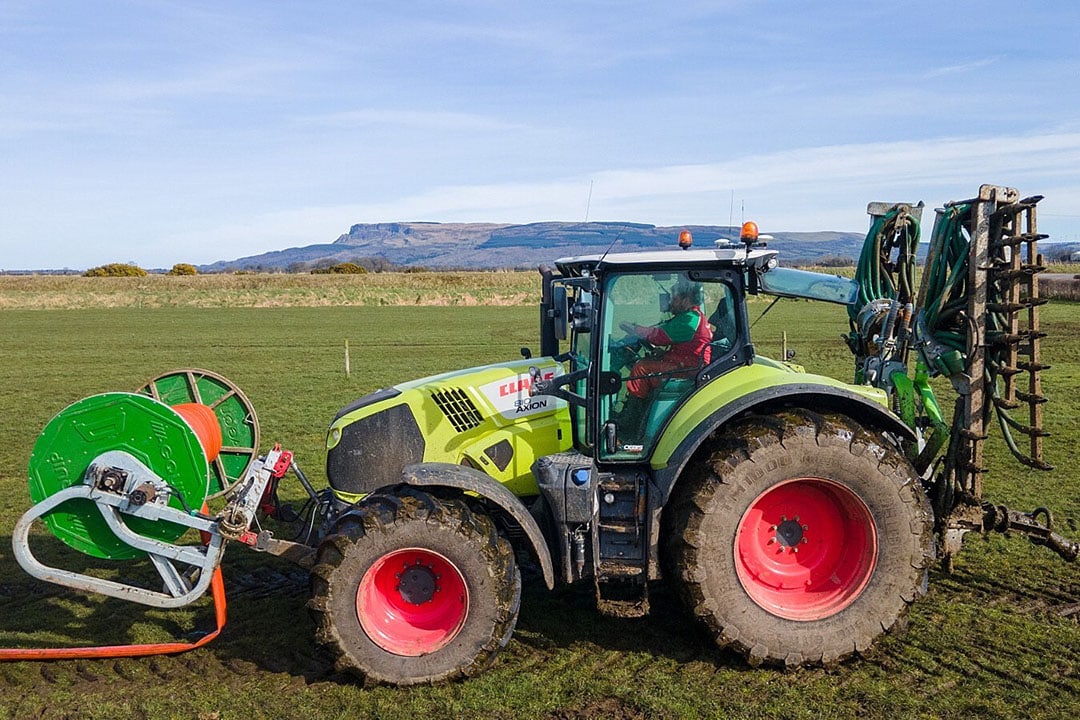High fertiliser prices: How are farmers worldwide coping with it? | Part 2

Northern Ireland farmer Alistair Craig is making a number of changes to his management programme in order to save costs on fertiliser.
For various reasons, global fertiliser prices have skyrocketed, especially nitrogen prices. How are crop growers worldwide coping with this? And what new precision techniques can help growers apply fertiliser as efficiently as possible?
Northern Ireland farmer Alistair Craig is making a number of changes to his management programme in order to save costs on fertiliser.
Along with switching to liquid fertiliser, he is also starting to use more precision technology and is taking a greater interest into what is happening in the soil.
Carsehall Farm is situated near the town of Limavady on the north west coast of Northern Ireland perilously close to the North Atlantic Ocean.
The 240 hectare farm is run by Alistair, who farms in partnership with his father, uncle and grandmother. The farm was purchased in 1995 and a dairy unit was subsequently set up there to run in harmony with the arable enterprise.
Text continues below image

Environmental challenges
Being beside the coast presents its own set of environmental challenges as the land ranges between two feet above sea level to two feet below it. Farmers in the region must be very careful when using fertilisers and chemical sprays as the area falls under the protected areas of ASSI, Areas of Special Scientific Interest.
Alistair said: “We farm around 240 hectares of land, approximately 140 hectares of grass and forage and 100 hectares of cereals. On the forage side we have mainly perennial grass with clover, 16 hectares of hybrid grass, and 12 hectares of lucerne. Currently we have a few other crops mixed with the lucerne, namely sainfoin, plantain and birds foot trefoil, to try and improve soil structure and biodiversity around the farm.”
“On the cereal side, we have been predominantly been planting winter barley, but this year we are trying oil seed rape, rye and wheat alongside the winter barley. This will help rotation, biodiversity and hopefully ease harvest pressure as they are not all harvested at the same time,” he said.
At Carsehall Farm the structure is to grow 25 hectares per year to sell as certified seed and the remainder as feed for the dairy herd in a further bid to cut costs and reduce the carbon footprint otherwise increased by importing feed.
All the crop straw is baled and used as bedding before being applied back to the arable fields the next year as farmyard manure.
Text continues below image

Increase in the costs of inputs
Alistair said: “This year we have seen an increase in the costs of inputs, but also increases of the grain prices. Barley is sitting around £300 per tonne (US$341), wheat around the same and oil seed rape is over £500 (US$569) per tonne.”
The family is looking at several methods to reduce their input costs, particularly via better soil management and the use of precision technology.
Having a closer working relationship with the biology of the soil and focusing on areas of plants that need the most attention is Alistair’s goal to reducing his costs while maintaining healthy yields.
Minimum till
Alistair said: “This year was the first time we have tried min till and it seems to have worked very well. I have only ploughed 13 hectares so far this year. The remaining stubble land was disced once and then planted.
I have cut the fuel use for establishment by 50 percent from around 25 litres per hectare to just 13 litres per hectare
“By changing this management side I have cut the fuel use for establishment by 50 percent from around 25 litres per hectare to just 13 litres per hectare. I also saved a lot of time during seeding and of course the carbon emissions were cut as well.”
Seeding is normally carried out pretty early at Carsehall Farm, weather permitting. The oil seed rape was in the ground on August 26, barley and rye was sown mid-September. The wheat will be sown on land following a potato harvest, which should be again, with favourable weather, in November.
This season Alistair has sown 7ha of Ambassador variety oil seed rape, 12ha of Tao rye, 70ha of barley using varieties Valerie and Tardis plus a ten variety mix. Around 11ha of Graham wheat will be sown.
Alistair said: “We currently use glyphosate and seem to have used more this year than normal because, as we are practising min till, we cannot rely on the plough to clean the fields for us. We have also used some fulvic acid along with the glyphosate this year to try and cut the rate and get a better kill. Normally, we try our best to do all we can before using glyphosate, by grazing down with sheep or cattle, but sometimes chemicals are the best alternative.”
Crop rotations on the farm normally sees winter barley sown for six to nine years, followed by grass or lucerne for three years. Alistair hopes to change that process to make it easier to control grass weeds and decrease the monoculture of the farm by adding in wheat and oil seed rape.
Text continues below image

Precision technology to curb expenses
With input costs on the up Alistair is becoming more dependent on the use of precision technology and more efficient management practices to curb his expenses. As well as more efficient use of slurry produced on the farm by the dairy herd, Alistair now focuses on more targeted spraying and a switch to liquid fertiliser application.
RTK autosteer allows us to carry out spraying and fertiliser spreading as accurate as possible
He said: “We currently have two tractors running RTK autosteer, which means they can steer themselves with around 2.5cm accuracy. This allows us to carry out spraying and fertiliser spreading as accurate as possible to avoid overlaps and wastage.
“Our sprayer also has auto section control so it automatically turns on or off when it needs to. Our grass growing ground would get approximately 35 units of fertiliser per cut and then topped up with slurry to provide the P and K. We normally take six cuts of grass per year.
Switch to liquid fertiliser
“For the last few years we have been applying slurry to our growing crops to provide the cereals with organic fertiliser, then topping up with artificial fertiliser. Normally we can provide all the P, K and about 60 units of nitrogen with slurry, then we top up with approximately 100 units of artificial nitrogen. However, for the past two years we have used Omex liquid fertiliser, which is 26N 5SO3,” he said. “The main reason we switched to liquid fertiliser, was that we already had the Chafer sprayer for spraying and my fertiliser spreader was due for renewal.”
The switch to liquid fertiliser means the Craigs did not need a dedicated fertiliser sower, using their sprayer for both fertiliser and pesticide applications.
Now that I’m using the liquid and more targeted application, I wouldn’t go back to using granular fertiliser
Alistair said: “A new fertiliser machine was going to cost another £20,000 (US$22,775) to change so I thought I would try the liquid. Now that I’m using the liquid and more targeted application, I wouldn’t go back to using granular fertiliser.”
“We use our Chafer sprayer to apply all our fertiliser and spraying. Liquid fertiliser is spread by target application so I know exactly where it goes and where it doesn’t go. This prevents over application and for us there are two reasons why this is very important. The first reason is to save on costs and secondly, we live beside an Area of Special Scientific Interest, which has a range of environmentally protective regulations on it.
“The sprayer is a Chafer 5000l 36m machine, made from stainless steel which is important when working with liquid fertiliser. It has GPS control and auto sections so it knows where to apply the fertiliser once I mark the boundary out and has 650 VF tyres on to cut down compaction.”
Text continues below image

Improved soil health means less fertiliser
A healthy and productive crop starts with a good soil structure and composition and the Craigs are starting to investigate and nourish their own soils more closely. “We have started to look at the soils biology a bit more,” Alistair said: “If the biology is right then we should be able to use less fertiliser and sprays to grow the same crop.”
“We have started using organic and regenerative processes to help the soil biology and are actively looking at other methods to help the fungi and bacteria in the soil. Slurry bugs, nitrogen fixing plants and soil enhancers are all being researched.”
“One of our most important management practices is to use companion crops with our main harvestable crops to help grow the cereal. For example, oil seed rape has spring beans, vetch, buckwheat and sunflowers growing to try and fix nitrogen, phosphate and keep slugs and insects away from the plants. The rye was meant to be planted with clover but my grass seeder broke down when I was about to drill it, but this might be an interesting one going forward.”
Large tyres to prevent soil compaction
“Our average rainfall here is 1,000mm or 40 inches, which is high, but we farm on free draining soil with high organic matter so the water disappears pretty quickly. One thing I do know is that our soils don’t like compaction, so all our tractors have large tyres to avoid hammering down the soil. As we grow lucerne, we don’t usually have much bother with aphids, but we did spray a couple of fields last year with aphicide as a precaution.
“Hopefully we can use IPM methods in the future to lower our inputs and help our beneficial insects going forward,” he added.
Spreading fertiliser per square metre
Alistair says in the future more management changes may be required in terms of spreading fertiliser more accurately, in smaller areas, depending on what the combine says.
I’d say going forward, spreading fertiliser per square metre will be the norm
He said: “I’d say going forward, spreading fertiliser per square metre will be the norm. It’s a trait being offered on a lot of new machines today, that links up with your combine to say where the land needs the fertiliser the most. I don’t know anyone using it locally yet but there are numerous farms in England using it, mostly because they can spread the cost of a new machine over thousands of hectares so it makes better financial sense.”
“My sprayer has technology that was popular ten years ago, so in another ten years’ time, I might be able to get something that has todays best technology,” he said.
In part 1 of this series of articles on high fertiliser prices, Michael Nichols of Redbank Farm in Australia explains how he is committed to using fertiliser as efficiently as possible.



